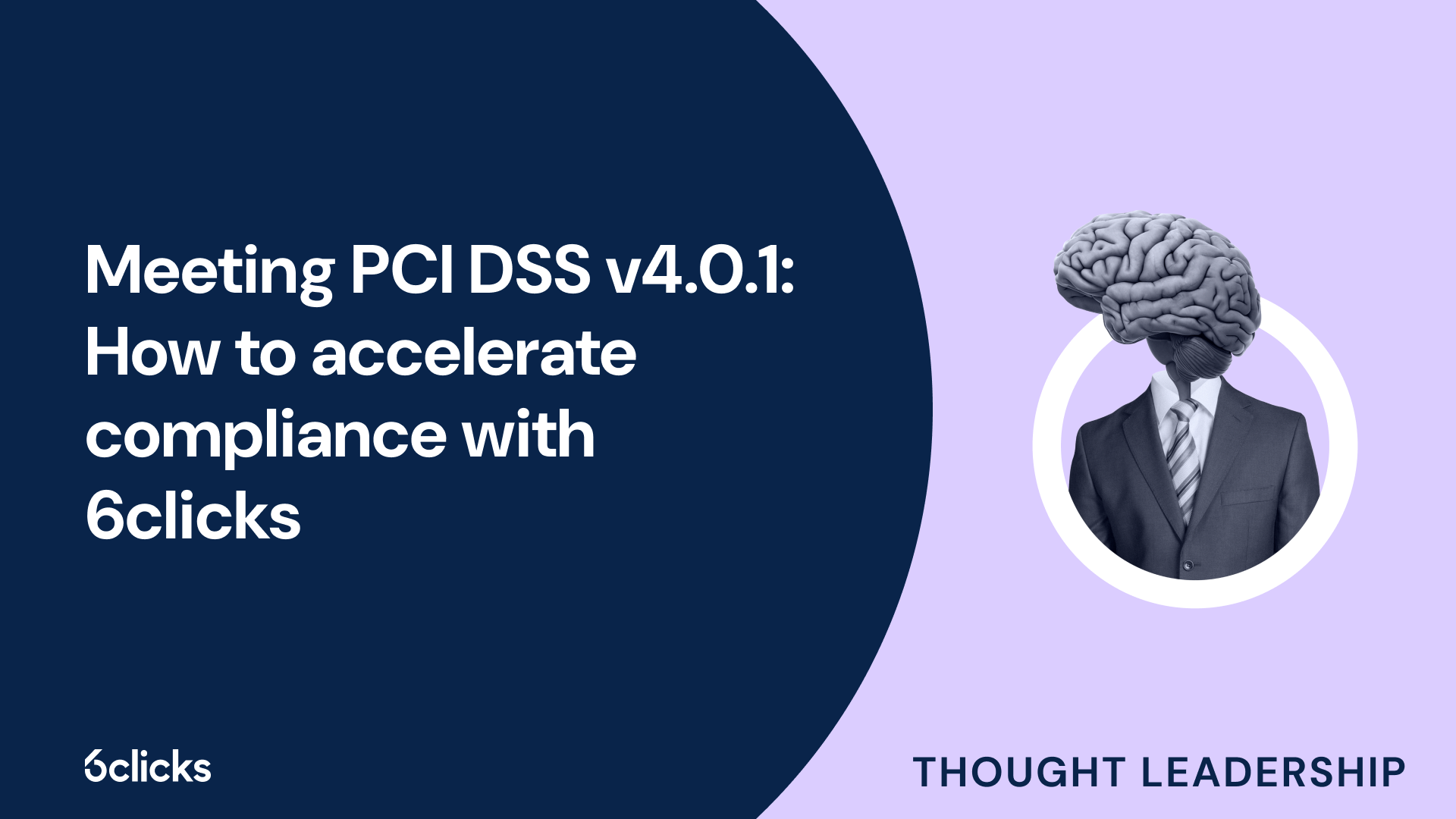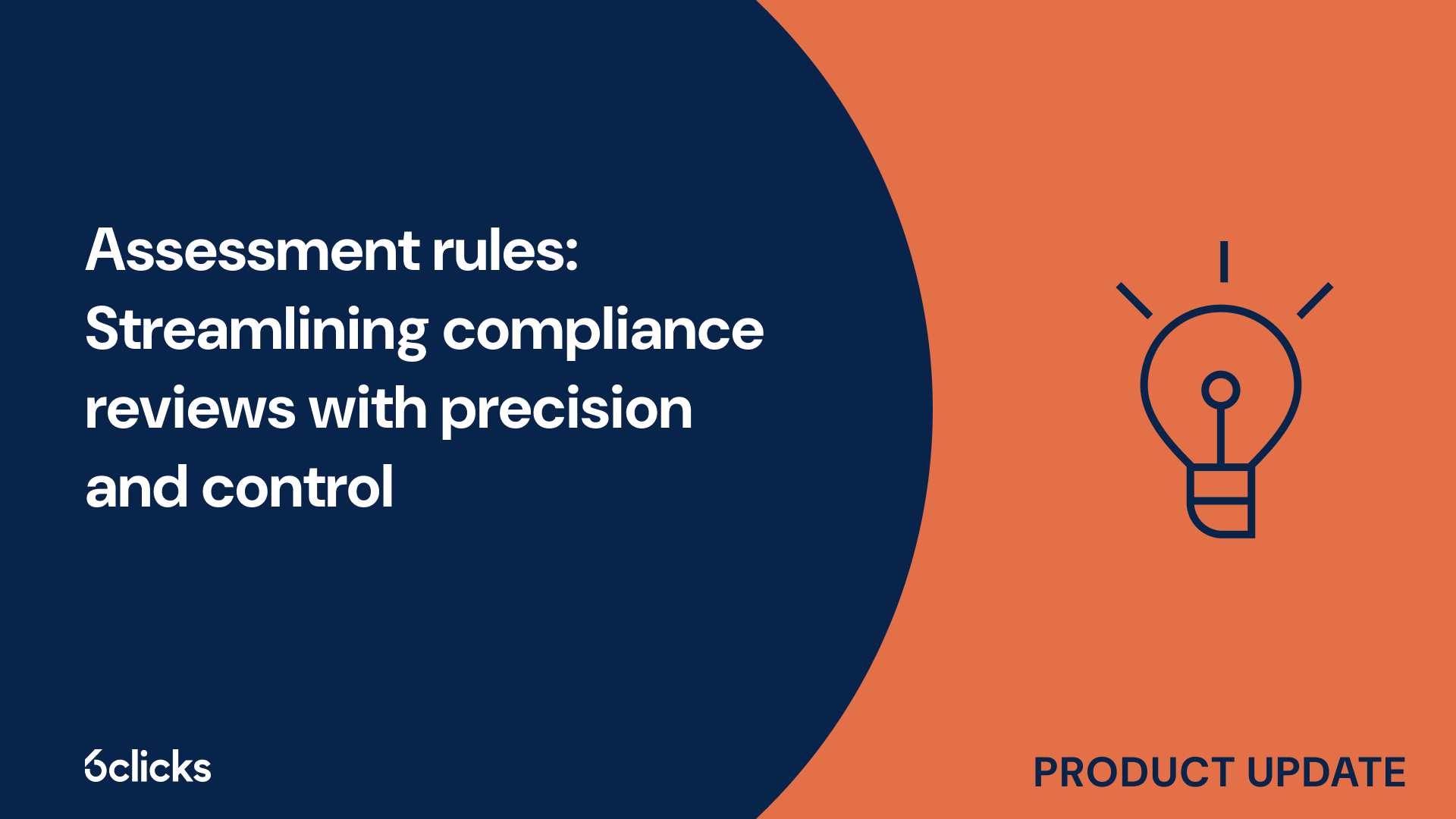The GRC buyer’s guide for 2025: Building resilience with AI-powered, federated solutions
Discover the ultimate GRC buyer's guide for 2025! Uncover how AI-powered, federated solutions transform compliance and security management for industries like government, aerospace, banking, and more. Learn about centralized control, continuous compliance, and advanced cyber GRC capabilities. Download now!
-1.png?width=200&height=249&name=Group%20193%20(1)-1.png)
The GRC buyer’s guide for 2025: Building resilience with AI-powered, federated solutions
What is ISMS?
Information Security Management System (ISMS) is a systematic approach to managing sensitive company information, ensuring its confidentiality, integrity, and availability. It is a set of policies, procedures, processes, and controls that are designed to protect information assets and manage security risks within an organization. ISMS enables organizations to establish, implement, monitor, review, maintain, and improve their information security management. The International Organization for Standardization (ISO) has developed a specific standard for ISMS called ISO/IEC 27001. This standard provides a framework for implementing an effective information security management system and is recognized internationally. By adhering to ISO/IEC 27001, organizations ensure that they have implemented the necessary controls and processes to safeguard their information assets and manage security risks effectively. ISMS helps organizations protect sensitive company information, mitigate security threats, comply with legal and regulatory requirements, and enhance their cybersecurity posture.
What is ISO 27001?
ISO 27001 is an international standard for information security management systems (ISMS) established by the International Organization for Standardization (ISO) and the International Electrotechnical Commission (IEC). It provides a systematic approach to managing sensitive company information, ensuring its confidentiality, integrity, and availability.
The main purpose of ISO 27001 is to create, implement, maintain, and continually improve an effective ISMS within an organization. This includes conducting regular risk assessments, identifying security objectives, implementing appropriate security controls, and addressing security incidents and threats.
One of the key benefits of ISO 27001 is that it provides a framework for organizations to identify and manage security risks in a systematic and structured manner. It also helps organizations demonstrate their commitment to information security to customers, regulators, and other stakeholders.
Obtaining ISO 27001 certification involves a rigorous certification process. This typically includes a certification audit conducted by an accredited certification body. The audit evaluates the organization's implementation and adherence to the ISO 27001 standard and its related controls. Upon successful completion, the organization is issued an ISO 27001 certificate, which serves as an attestation of its commitment to maintaining a high level of information security.
What is the difference between ISMS and ISO 27001?
The main difference between ISMS (Information Security Management System) and ISO 27001 lies in their nature and purpose. ISMS refers to a set of policies, procedures, and controls that establish the rules and guidelines for information security within an organization. It is a systematic approach to managing and protecting sensitive company information, including data, intellectual property, and customer information.
On the other hand, ISO 27001 is an international standard that provides requirements for implementing and certifying an ISMS. It serves as a guide for organizations to establish, implement, operate, monitor, review, and maintain their ISMS. ISO 27001 sets out a framework of best practices and controls that organizations should adhere to in order to effectively manage information security risks.
Overview of information security management system (ISMS)
An Information Security Management System (ISMS) is a systematic approach to managing sensitive company information by evaluating security risks and implementing necessary controls to protect against them. It includes policies, procedures, processes, and resources to establish, implement, operate, monitor, review, and maintain information security within an organization. An ISMS ensures that the confidentiality, integrity, and availability of information are maintained, and that any potential security incidents are identified, managed, and resolved. By implementing an ISMS, organizations can mitigate security threats, adhere to legal and regulatory requirements, protect sensitive data, and enhance their overall cybersecurity posture. The internationally recognized standard for implementing and certifying an ISMS is ISO/IEC 27001. This standard provides organizations with a framework of best practices and controls to effectively manage information security risks and ensure continual improvement in their security management systems.
Definition of ISMS
ISMS, or Information Security Management System, is a comprehensive and systematic approach to securing corporate information assets. It consists of policies, procedures, and controls that are designed to minimize the risks and vulnerabilities associated with the storage, processing, and transmission of sensitive information.
At its core, ISMS works by taking a proactive and holistic approach to information security. It uses regular risk assessments to identify potential threats and vulnerabilities, which allows organizations to implement appropriate controls to mitigate these risks. By adhering to a structured framework, ISMS provides a consistent and efficient way to keep information assets secure.
One of the key advantages of ISMS is its technology and vendor-neutral approach. This means that it can be applied to any organization, regardless of the specific technologies or vendors they use. This flexibility allows businesses to adapt and evolve their security strategies as their technology landscape changes.
Principles of ISMS
Principles of ISMS, or Information Security Management Systems, are fundamental guidelines that organizations follow to ensure the secure handling of their information assets. ISMS takes a systematic approach to securing these assets, involving policies, procedures, and controls that are based on regular risk assessments.
First and foremost, ISMS operates on the principle of a systematic approach. It involves establishing a structured framework that allows organizations to identify, manage, and minimize risks to their information assets. This approach ensures that security measures are implemented consistently and effectively throughout the organization.
ISMS also emphasizes the importance of policies, procedures, and controls. Policies define the rules and guidelines for information security, while procedures provide step-by-step instructions for implementing these policies. Controls, on the other hand, are the mechanisms put in place to protect information assets and mitigate risks. Together, these components form the foundation of an effective ISMS.
Regular risk assessments are another crucial principle of ISMS. By conducting ongoing risk assessments, organizations can identify potential threats and vulnerabilities to their information assets. This enables them to implement appropriate controls and measures to mitigate these risks, ensuring the continued security of their information.
Implementing an ISMS offers several benefits. It helps organizations ensure effective asset management by providing a systematic approach to maintaining the confidentiality, integrity, and availability of their information assets. It also reduces security incidents by identifying and addressing potential risks in a proactive manner.
Elements of ISMS
The key elements of an ISMS (Information Security Management System) in ISO 27001 play a crucial role in securing information assets within an organization. These elements, such as policies, procedures, and controls, are designed to establish comprehensive and effective information security rules.
Policies form the foundation of an ISMS by defining the organization's overarching principles and guidelines for information security. These policies outline the framework for protecting sensitive information, ensuring compliance with legal and regulatory requirements, and setting security objectives.
Procedures provide step-by-step instructions for implementing the policies defined within the ISMS. They outline how specific tasks and operations should be carried out to ensure consistency and uniformity in information security practices. By following established procedures, organizations can reduce the risk of human error and maintain security standards.
Controls are the mechanisms put in place to protect information assets and mitigate risks. These controls can include technical measures (such as firewalls and encryption), physical security measures (such as surveillance systems and access controls), and administrative measures (such as employee training and security incident response plans). These controls are implemented to prevent or detect unauthorized access, disclosure, alteration, or destruction of information assets.
By incorporating these elements into their ISMS, organizations can establish information security rules that provide a clear framework for protecting sensitive data. This ensures that all employees understand their roles and responsibilities in maintaining information security and minimizes the risk of security breaches or incidents. ISO 27001 provides a comprehensive framework for implementing these elements and enables organizations to achieve internationally recognized certification in information security management.
Benefits of implementing an ISMS
Implementing an ISMS (Information Security Management System) offers numerous benefits for organizations looking to secure their information assets efficiently and systematically.
One of the key advantages of an ISMS is its systematic approach. It provides a structured framework for managing information security that is aligned with international standards, such as ISO/IEC 27001. This systematic approach ensures that all necessary security controls are implemented and helps organizations minimize the risk of security breaches.
Regular risk assessments are a fundamental part of an ISMS. By regularly evaluating and identifying potential security risks, organizations can proactively implement appropriate security measures to protect their information assets. This risk-based approach allows companies to prioritize their resources effectively and manage security risks in a targeted and efficient manner.
Furthermore, an ISMS follows a technology-neutral and vendor-neutral approach. It does not favor specific solutions or products, but rather focuses on selecting security controls based on the organization's specific needs. This flexibility enables organizations to choose the most suitable security techniques and tools while considering their resources and budget limitations.
By implementing an ISMS, organizations can significantly reduce security incidents. The systematic and risk-based approach to information security minimizes vulnerabilities and strengthens the overall security posture. This proactive approach, coupled with the continuous monitoring and improvement inherent in an ISMS, helps identify and address potential security gaps before they can be exploited.
Overview of ISO/IEC 27001:2022 standard
ISO/IEC 27001:2022 is an international standard that sets out the requirements for establishing, implementing, maintaining, and continually improving an information security management system (ISMS). It provides organizations with a systematic approach to managing their information security risks, ensuring the confidentiality, integrity, and availability of their information assets. The standard provides a comprehensive framework for identifying security controls, conducting risk assessments, and implementing necessary measures to mitigate security risks. ISO/IEC 27001:2022 promotes a risk-based approach to information security by helping organizations prioritize their resources and implement appropriate security measures based on the specific threats they face. Certification against this standard demonstrates an organization's commitment to protecting sensitive information and managing security risks effectively. By following this internationally recognized framework, organizations can enhance their cybersecurity posture, build trust with stakeholders, and demonstrate compliance with legal and regulatory requirements.
Definition of ISO/IEC 27001:2022 standard
ISO/IEC 27001:2022 is an international standard for information security management systems (ISMS). It provides organizations with a systematic approach to managing the security of their sensitive company information, including intellectual property and customer data.
The standard outlines a risk-based approach to identify and assess security risks, develop and implement security controls, and establish a framework for continual improvement and management of security incidents. By adhering to ISO/IEC 27001:2022, organizations can effectively protect against a wide range of security threats and meet the stringent requirements of regulatory bodies, contractual obligations, and customer expectations.
The ISO/IEC 27001:2022 standard is highly significant as it helps organizations establish and maintain an effective information security management system. It provides a comprehensive set of controls and guidelines to address security risks, ensuring the confidentiality, integrity, and availability of information. Additionally, ISO/IEC 27001:2022 certification demonstrates an organization's commitment to information security, enhancing its reputation and credibility in the market.
The 2022 version of ISO/IEC 27001 brings several updates to the standard. These include additional implementation guidance, enhanced risk management process, improved alignment with other management system standards, and updates to address emerging security threats and technologies. These updates ensure that ISO/IEC 27001 remains relevant and effective in the ever-evolving landscape of information security.
Requirements for certification to ISO/IEC 27001:2022 standard
Certification to the ISO/IEC 27001:2022 standard requires organizations to follow a systematic approach in establishing an information security management system (ISMS). The first step is to build an ISO 27001-compliant ISMS by defining scope, identifying information assets, and conducting a risk assessment. This involves identifying potential risks to the security of information and evaluating their potential impact.
Once the risks are identified, organizations must develop risk treatment strategies to mitigate and manage these risks effectively. This includes implementing ISO 27001-compliant processes and controls to address identified risks and protect information assets. Controls may involve technical, physical, and organizational measures to ensure the confidentiality, integrity, and availability of information.
After implementing the necessary controls, organizations must engage an ISO-accredited certification body to assess their compliance with the ISO/IEC 27001:2022 standard. The certification process involves a certification audit, where the certification body assesses the organization's ISMS against the requirements of the standard. If the organization meets the requirements, it is granted ISO 27001 certification, demonstrating its commitment to information security.
By achieving certification to the ISO/IEC 27001:2022 standard, organizations can enhance their cybersecurity posture, protect sensitive company and customer information, establish supplier relationships based on trust, and meet contractual and regulatory requirements. Ultimately, certification to this international standard provides organizations with a framework for continual improvement and management of security incidents, ensuring the ongoing protection of their information assets.
Annex A - control objectives and controls
In the new version of ISO 27001:2022, there have been significant changes to the control structure, specifically in Annex A which outlines the control objectives and controls for information security management systems (ISMS). These changes include the addition of 11 new controls and the reorganization of control groups.
The controls in Annex A are now categorized into four themes: People controls, Organizational controls, Technological controls, and Physical controls. This categorization helps organizations better understand and implement the necessary measures to protect their information assets.
ISO 27002:2022, which provides guidance on implementing the controls, has also made changes to the wording and added additional requirements for some controls. This ensures that organizations have a comprehensive and up-to-date framework to address the evolving security threats and challenges.







